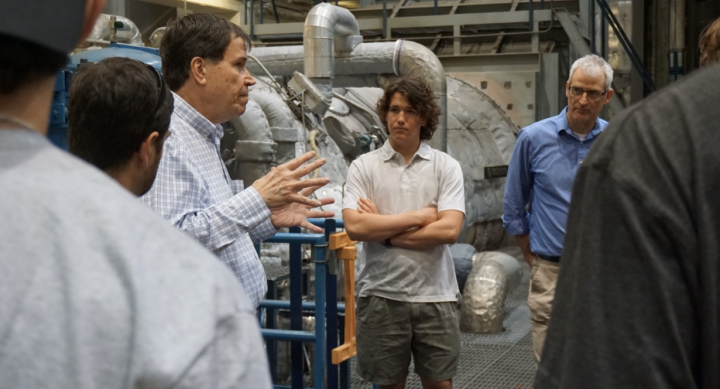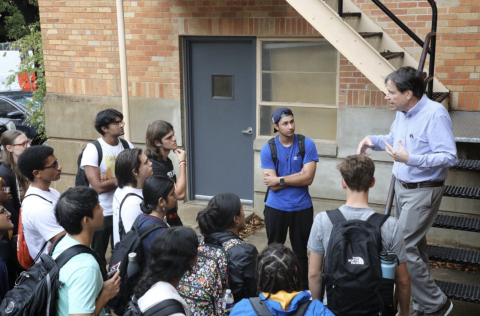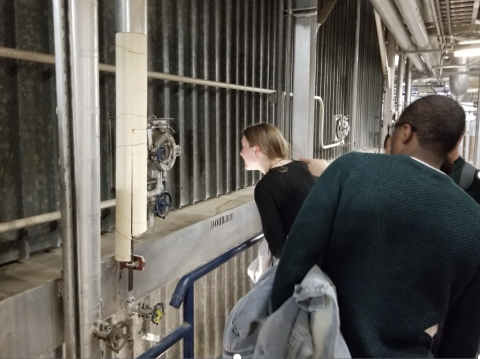
The energy at The University of Texas at Austin is electric with a thriving academic community. Beneath the surface, another energy is at work — the University's microgrid, a self-sufficient system that powers UT, ensuring reliable electricity, heating, and cooling. This microgrid also offers a unique opportunity: a living-learning laboratory for students across various majors.
The Carl J. Eckhardt Combined Heat and Power (CHP) Plant works as an efficient utility provider and a transformative learning environment thanks to the dedication and innovative efforts of the employees in Utilities and Energy Management (UEM), a department in Campus Operations.
Through expert-led tours, UEM complements UT students' education on topics of engineering, energy production, and sustainability, with real-world applications. Tours are also given for many other academic and research interests such as environmental law and policy, business, architecture, and public affairs.

"I was in my third year as an engineer before I ever saw some of the equipment we use at the power plant in person," said Xavier Rivera Marzán, executive director of UEM. "Most students and engineers work with symbols and diagrams early on. Here at UT, students can see the actual machinery behind those concepts — a boiler in action, not just a box labeled 'B' on a page."
Providing reliable service to campus is crucial to enable students, faculty, and staff to be the foundation needed to do the work that ultimately changes the world. The UEM Operations division generates electric power, chilled water, hot water, steam, and other utility services. The Operations team also leads the tours that make such an impact on students.
"We receive some very unique and insightful questions from students during their visits," said Ryan Thompson, director of operations at UEM. "It's inspiring to see the next generation of experts thinking in curious and innovative ways. As a former student here myself, I saw directly how helpful and educational seeing these plants can be."
Started in 1929, the power plant has grown with the campus. It still houses equipment from the 1940s that is operational, providing a look at the past while also achieving recognition for operating newer, state-of-the-art technologies. UEM is committed to best practices and innovation, earning a Performance Excellence in Electricity Renewal (PEER) Platinum certification in 2015 and earning that designation again in 2020. PEER certification signifies that a power system meets the highest industry standards in terms of performance, sustainability, and preparedness for challenges. While all PEER-certified projects are a cut above the rest, Platinum status signifies the highest degree of achievement. UEM is currently undertaking projects to prepare for integration of new energy sources and technologies, such as alternative fuels like hydrogen, alternative water sources, and electrification of vehicles and systems.

UEM strives to operate not only as a utility provider and an implementer of innovative technologies, but also as a contributor to the University’s mission by enabling students and researchers to use the facilities as living-learning laboratories where they are able to see operating equipment and obtain data for research.
"With the tours, one of the key value adds to the University's mission is the experiential transfer of information from our staff,” said Rivera Marzán. "For example, Clay Looney has over 30 years of experience in plant operations management. Our team has national-level professional engineers and subject matter experts that can provide valuable insight to these interested students and researchers.”
By turning our PEER Platinum-certified microgrid into a living-learning laboratory, UEM is not only ensuring the smooth operation of the University's energy system, but also nurturing the next generation of energy experts.

